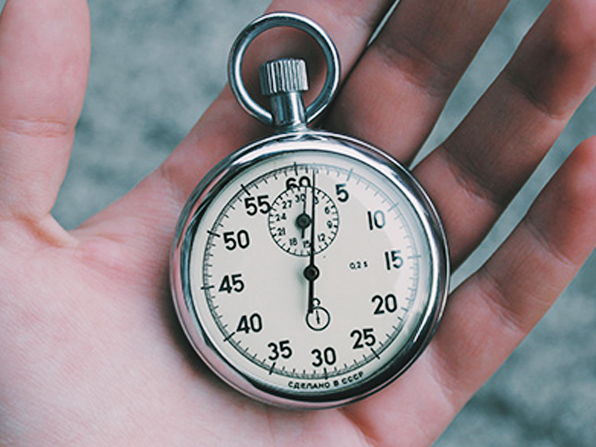The Ketogenic – or “Keto” diet – is a low-carbohydrate, adequate-protein, and fat-rich eating plan, that's been used for centuries to treat specific medical conditions. The combination changes the way energy is used in the body, converting fat into fatty acids and ketones in the liver. When there is an elevated level of ketones in the blood, one is in a state of ketosis, which has a variety of therapeutic benefits for the sick and healthy alike.
There are 5 variations of the Ketogenic Diet which have been published in medical literature as effective treatments for diseases that have an underlying metabolic dysregulation, such as epilepsy, cancer, and Alzheimer’s.
The original Ketogenic Therapy, also known as the classic Ketogenic Diet, or classic Keto for short, was designed in 1923 by Dr. Russell Wilder at the Mayo Clinic for the treatment of epilepsy in children in whom medication was ineffective. Before that, in the 19th century, the ketogenic diet was commonly used to help control diabetes.
The ketogenic diet has also been tested and used in closely monitored settings for cancer, diabetes, polycystic ovary syndrome, and Alzheimer’s disease.
All Ketogenic Diets are a variation of classic Keto, which is the most strict, seen by it’s ratio of fat to protein and carbs, also called the macronutrient ratio. Classic Keto carries a 4:1 ratio, which means that there are four parts fat for every one part protein and carb. Since fat has a higher caloric content versus protein and carb (fat has 9 calories per gram, while both protein and carb have just 4 calories per gram), 90% of the calories come from fat in a classic Ketogenic Diet, while 6% come from protein, and 4% come from carb. The main difference between the five types of Ketogenic Diets is this macronutrient ratio.
In addition to the macronutrient ratio, the frequency of eating can influence ketosis. More specifically, a practice called intermittent fasting, which reduces the window of time a person eats throughout the day, can help in obtaining and sustaining ketosis. When the eating window is shortened, the body is forced to access energy from its own fat stores rather than calories directly from the diet.
For the sake of variety and perspective, here are a number of takes on ketogenic dieting:
1. Classic Keto.
An individualized and structured diet that provides specific meal plans. Foods are weighed and meals should be consumed in their entirety for best results.
Macronutrient Ratio: 4:1
2. Modified Keto.
Modifying the restrictiveness of the classic keto can be helpful when starting the diet, or when tapering down to a more sustainable, long term one.
Macronutrient Ratio: 3:1 to 1:1 (range)
3. MCT
An individualized and structured diet containing highly ketogenic Medium Chain Triglycerides (MCT), allowing for more carb and protein than classic keto.
Macronutrient Ratio: 1.9:1
4. Modified Atkins.
Limits the amount of carbohydrate, encourages fat, and does not limit protein. Carbohydrates are to be accompanied by fat when consumed.
Macronutrient Ratio: 0.8:1
5. Low Glycemic Index.
An individualized but less structured diet, it uses exchange lists for planning meal and emphasizes complex carbohydrates. It is not intended to promote ketosis.
Macronutrient Ratio: 2:3
6. Intermittent Fasting.
A dietary intervention that shifts the body into ketosis by limiting the window of time one eats during the day, forcing the body to access energy from body fat.
Macronutrient Ratio: N/A
The chart below outlines the macronutrient ratios and their caloric percentage counterpart for different variations of a ketogenic diet.
| Macronutrient ratio | Fat | Protein | Carb |
| Classic Keto (4:1) | 90% | 6% | 4% |
| Modified Keto (3:1) | 87% | 10% | 3% |
| Modified Keto (2:1) | 82% | 12% | 6% |
| Modified Keto (1:1) | 70% | 15% | 15% |
| MCT Oil (1.9:1) | 50% MCT : 21% LCT | 19% | 10% |
| LGIT (2:3) | 60% | 28% | 12% |
| MAD (0.8:1) | 65% | 29 – 32% | 3 – 6% |
Note: MCT stands for Medium Chain Triglycerides, and LCT stands for Long Chain Triglycerides
Ketogenic therapy includes more than just diet. Nutritional supplements, electrolytes, hydration and activity levels are also key. Individuals who are suffering from digestive problems generally need additional support. This is where an experienced ketogenic specialist can be extremely helpful. Monitoring ketosis is another important aspect of therapy. Ketosis can be measured by three different methods: Blood, breath and urine. Blood readings is the most accurate and reliable method of testing, though it is also the most expensive. Urine strips provide an affordable option, though readings can vary widely based on hydration. Breath monitors have similarly varying results, and a higher entry price, though technology is improving.
What are the benefits of Ketosis?
Achieving a state of ketosis can have multiple benefits, including treating chronic illnesses, optimizing performance, etc. While the benefits are well documented, the underlying mechanism of action is not entirely known. The diet enhances the ability of mitochondria, the power plants of our cells, to deliver our bodies’ energy needs in a manner that reduces inflammation and oxidative stress. Through optimizing the way our body uses energy, we fortify our bodies’ ability to combat several diseases as well as take no the stressors of our modern way of living.
1. Focusing the brain (increased memory, cognition, clarity, and seizure control; less migraines)
While the exact mechanism of seizure prevention with a ketogenic diet is still a mystery, researchers believe it has something to do with the increased stability of neurons and up-regulation of brain mitochondria and mitochondrial enzymes.
Related to this research, some serious attention has been given to ketogenic dieting and Alzheimer's Disease. Scientists have discovered increased cognition and enhanced memory in adults with impairments in these areas, and a growing body of research shows improvement at all stages of dementia. Ketosis has been shown to be effective against Parkinson’s disease as well.
For a broader audience of dieters, the often-reported side effects of increased mental clarity and focus and less frequent and less intense migraines are likely related to the more stable blood sugar and altered brain chemistry that improves memory and cognition as well.
2. Fighting some types of cancer
Dom D’Agostino’s lab published an article in 2014 named “Ketone supplementation decreases tumor cell viability and prolongs survival of mice with metastatic cancer.”
Here is an important piece from the abstract:
Cancer cells express an abnormal metabolism characterized by increased glucose consumption owing to genetic mutations and mitochondrial dysfunction. Previous studies indicate that unlike healthy tissues, cancer cells are unable to effectively use ketone bodies for energy. Furthermore, ketones inhibit the proliferation and viability of cultured tumor cells.
Of course, you shouldn’t ignore your doctor’s advice when it comes to cancer treatment, but — like many of the topics addressed in this article — it may be helpful for you to bring up the conversation.
3. Preventing Heart Disease (lower blood pressure, lower triglycerides, better cholesterol profiles)
Again, related to the downstream effects of keeping blood glucose low and stable, a ketogenic diet helps keep your blood pressure in check and lowers the triglyceride levels.
While it may seem counterintuitive that eating a higher percentage of fat in your diet lower triglycerides, it turns out that the consumption of excess carbs (especially fructose) is the key driver of increasing triglycerides.
And regarding HDL and LDL particles (which the body uses to move fat and cholesterol around), ketogenic dieting helps raise HDL(“good cholesterol”) and improve the profile of LDL (“bad cholesterol”).
4. Decreasing inflammation (which improves acne, arthritis, eczema, psoriasis, IBS, pain, etc.)
A Nature Medicine article last year found a likely mechanism behind what people have known for decades: ketogenic dieting is profoundly anti-inflammtory and helps with a host of related health problems.
The researchers found that “the anti-inflammatory effects of caloric restriction or ketogenic diets may be linked to BHB-mediated inhibition of the NLRP3 inflammasome.”
In other words, the key player in many inflammatory diseases is suppressed by BHB, which is one of the main ketones produced from a ketogenic diet.
Thus the implications on arthritis, acne, psoriasis, eczema, IBS, and other diseases involving inflammation and pain are significant enough that it is prompting more research attention.
5. Improving energy levels and sleep
By the 4th or 5th day on a ketogenic diet, most people report an increase in general energy levels and a lack of cravings for carbs. The mechanism here involves both a stabilization of insulin levels and readily available source of energy for our brain and body tissues.
Sleep improvements are a bit more of a mystery. Studies have shown that ketogenic dieting improves human sleep by decreasing REM and increasing slow-wave sleep patterns. While the exact mechanism is still unclear, it likely is related to the complex biochemical shifts involving the brain’s use of ketones for energy combined with other body tissues directly burning fat.
6. Assisting Women’s Health (increased fertility, stabilizing hormones)
An extensive review published in 2013 looked at the research and evidence of ketogenic diets enhancing fertility (long story short, it looks promising). Studies also show that Polycystic Ovary Syndrome (PCOS) can be treated effectively with low-carb dieting, which reduces or eliminates symptoms such as infrequent or prolonged menstrual periods, acne, and obesity.
Overall, keeping blood sugar levels low and stable, which results in lower overall levels of insulin in the blood, helps equilibrate and stabilize other hormone levels, especially in women. This naturally has downstream benefits on a wide variety of metabolic pathways related to insulin, such as hunger and energy utilization.
7. Helping the eyes (more stable vision; less risk for cataracts)
As any diabetic will tell you, it is well known that high blood sugar has a detrimental effect on eyesight and leads to an increased risk for cataracts. It’s therefore not surprising that keeping blood sugar levels low improves eye and vision health, as related diabetes research has proven.
8. Gaining muscle and improving endurance
BHB, specifically, has been shown to promote muscle gain. Combined with tons of anecdotal evidence over the years, there is an entire movement behind bodybuilders using a ketogenic approach to gain more muscle and less fat (typically muscle gain also comes with fat gain, so there’s understandable attention being given toward preventing this).
In addition, Dr. Stephen Phinney and Dr. Jeff Volek have a number of papers published about ketogenic dieting for ultra-endurance athletes. In short, once these athletes are fully fat-adapted, there is evidence to suggest that mental and physical performance is significantly improved beyond a “normal” carbohydrate-rich diet.
How to Enter Ketosis Quickly, Easily, and Reliably?
What initiates ketosis is an empty store of liver-glycogen, so this method will attempt to eliminate liver-glycogen stores in the quickest manner possible.
Here is the full-proof method to enter ketosis:
Day 1:
Do not eat anything after 6 p.m.
Day 2:
Wake up and perform HIIT (high intensity interval training) or intense conditioning/weight training on an empty stomachBegin a strict ketogenic diet with 0-2% of calories attributed to carbohydrates.
Day 3:
Wake up and perform MISS (medium intensity steady state) or light-medium intensity conditioning/weight training on an empty stomachBegin a normal ketogenic diet with 5% of calories attributed to carbohydrates
If not already, you will soon be in ketosis in a short matter of time.
How to Know You're Under Ketosis?
When the body is under a ketogenic metabolism, you will exhale gaseous acetone and excrete acetone through the urine.
Acetone is said to have a “fruity” smell, so if your breath or urine smells somewhat like fruit then you're under ketosis. Many people also report a metallic taste in their mouths when under ketosis.
There are also ketostix available at any pharmacy with which to test yourself for ketosis.
Bottom line.
A ketogenic diet might be an option for some people who've had difficulty losing weight with other methods. The exact ratio of fat, carbohydrates, and protein that's needed to achieve health benefits will vary from one person to another, due to their genetic makeup and body composition. Therefore, if one chooses to start a ketogenic diet, it's highly recommended to consult with a physician and a dietitian to closely monitor any biochemical changes after starting the regimen, and to create a meal plan that's tailored to one’s existing health conditions and to prevent nutritional deficiencies or other health complications. A dietitian can also provide guidance on reintroducing carbohydrates once weight loss is achieved.








